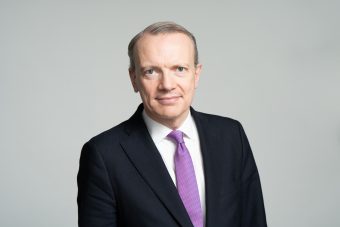
The language of the wind is simple. However, although every whistle tells us “healthy environment”, “unlimited green kilowatts”, and “energy stability”, investments in dirty technologies and fossil fuels are still going on.
The activities of the WindEurope Association are becoming more and more important; they are the activities of those who listened to what the wind was saying and are now committed to harmonizing national policies with the needs of the wind industry. We spoke with WindEurope CEO Giles Dickson about longterm plans for wind energy in Europe and the obstacles that may be found on the way to the goal, the link between green energy and electromobility, as well as the potential of wind in our country.
EP: Europe gets about 16 per cent of its electricity from wind, while ambitious plans for 2050 say that 50 per cent of its electricity will come from wind. Is this feasible, and how?
Giles Dickson: The European Commission’s decarbonization scenarios estimate that half of all electricity by 2050 will come from wind. To fully understand the size of this challenge, one also has to see that today electricity is only 25 per cent of all energy used in Europe. This will change. Today our cars run on gasoline, and our boilers are heated with fossil fuels. In the future, these processes will be electric. Direct electrification will account for 57 per cent of all energy used in Europe by 2050. Another 18 per cent will come from indirect electrification with renewable hydrogen and its derivates. The European wind industry is getting ready to accelerate the expansion of both onshore and offshore wind massively. By 2050 we will need 1,000 GW of onshore wind and 300 GW of offshore wind. This is up from less than 200 GW today. The main challenge will be getting permits.
In focus:
EP: In November, the Electric City conference was held in Copenhagen. In addition to wind energy, electromobility was also discussed, and this is also the topic of this issue of the Energy Portal magazine. Where is the connection between wind energy and electromobility?
Giles Dickson: The connection between wind energy and electromobility is clear. The whole idea of switching from today’s internal combustion engines, running on petrol and diesel, to electric vehicles is to reduce CO2 emissions in the transport sector. Charging an electric vehicle with electricity from dirty lignite plants is complete nonsense. The expansion of renewables in general, and wind energy, in particular, is essential to the success and acceptance of electric vehicles. Let me be clear: renewable electricity is the way forward for individual transport. Renewable hydrogen will remain scarce for years to come. We must always remember that direct electrification is the most energy-efficient way to decarbonize. We should only use these valuable e-fuels in those sectors that cannot be electrified directly. First, we must replace the current applications of fossil hydrogen. Then we should focus on the “hard to abate” sectors like aviation, shipping, and industry.

EP: Do you have data on electromobility in Europe? How many electric vehicles are used, and how many chargers are available?
Giles Dickson: The share of battery-electric vehicles in new car sales has grown continuously over the past few years. For the first time in 2020, electric vehicles (including plug-in hybrids) made up a 10 per cent share of new sales. Just one year later, in 2021, this share has risen to 25 per cent, meaning that one out of four cars sold in Europe was electric. Diesel and petrol car sales are declining. And this will only continue over time. The European Commission has proposed an effective ban on fossil-fuel vehicles from 2035. Charging infrastructure is also expanding. Germany, for example, almost doubled the number of charging points to more than 50,000 in just two years. It is important to mention that electrification is not only a solution for cars. Companies like Volvo and MAN invest heavily in electric trucks, Rolls-Royce, DHL, and Wisk are experimenting with electric planes, and Norway has launched the world’s biggest electric ferry.
Interviewed by: Milica Marković
Read the story in the new issue of the Energy portal Magazine ELECTROMOBILITY.



